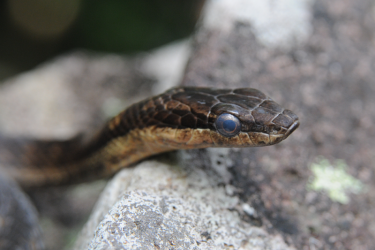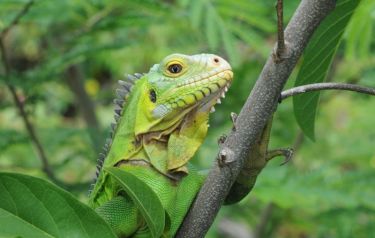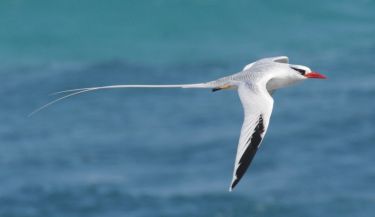Nature
St Eustatius boasts a range of unique, threatened and endangered habitats and species. Habitats range from primary rain forest to cactus and woodlands, seagrass beds and coral reefs. The island is volcanic in origin with lush vegetation ranging from seagrapes and aloe in the coastal areas to ferns and mountain mahogany trees at altitude. There are coral reef bombs and fingers, patch reef and fringing reef and drop off spur and groove systems. The underwater scenery is a network of exceptionally well preserved patch reefs, abundant stands of rare black coral, large numbers of fish, sharks and rays as well as lobsters and turtles.
Amongst the rare and endangered species which find a home on St Eustatius, is the red bellied racer snake, found only on St Eustatius and Saba, an endemic subspecies of fruit eating bat and the endemic Saban anolis lizard. Remnant populations of the endangered Lesser Antillean iguana (Iguana delicatissima) have found a last refuge on six Caribbean islands including St Eustatius. The island is home to a wealth of birds. St Eustatius provides nesting sites for the Brown Pelican and roosting sites for the endangered Magnificent Frigate Bird. Because of the abundance of steep, undeveloped coastal cliffs in the Boven sub-sector of the National Park, and lack of predators, St Eustatius is also a nesting site of the Red Billed Tropic bird. Endangered sea turtles are found resident and still nest on the protected beaches of St Eustatius.
Three National Park areas protect the rich biodiversity and unique tropical ecosystems present on both land and sea. The total protected area covers 33 square km.
Go to St Eustatius National Parks website
Go to St Eustatius Observatoins website




